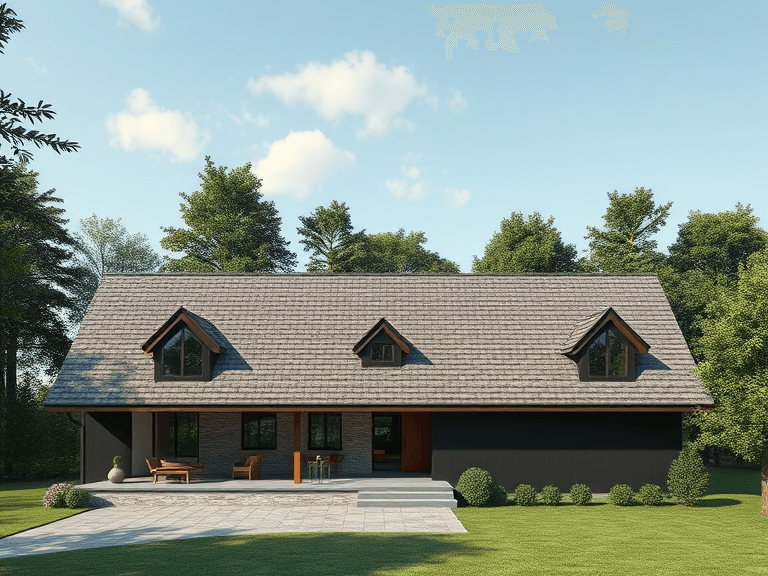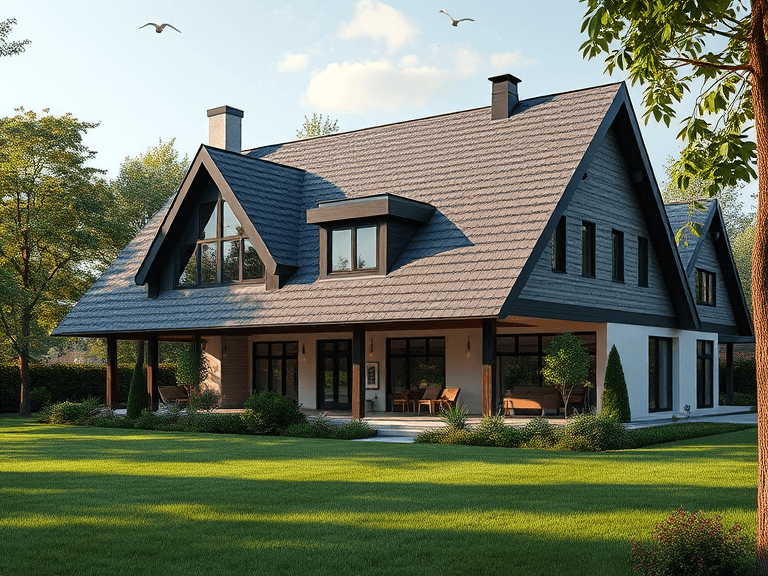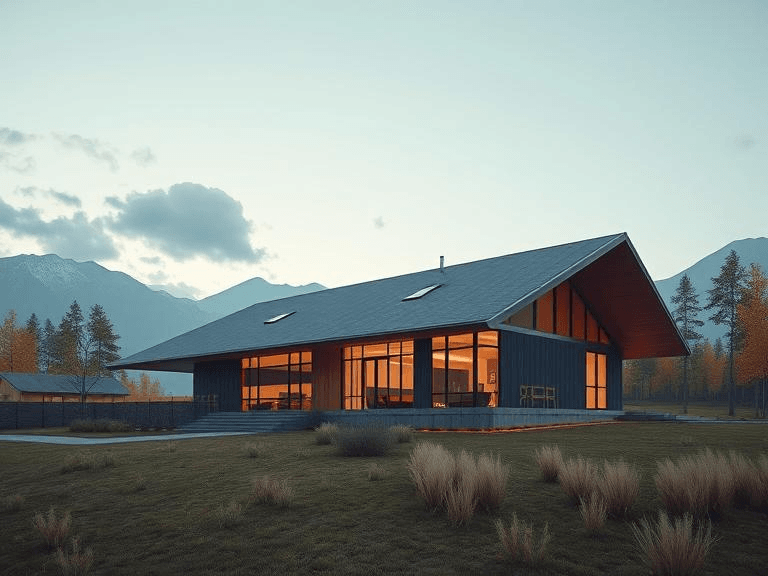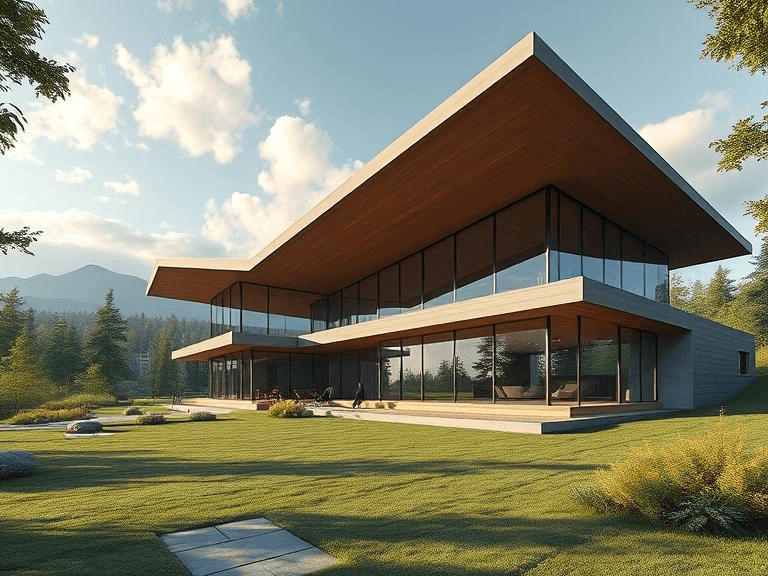
Roof shingles are a critical component of residential roofing systems, acting both as a protective layer and a vital aesthetic element. They come in various types, each offering unique characteristics in material composition, lifespan, and visual appeal. Among the most common types are asphalt, wood, metal, and slate shingles, each catering to different preferences and budgets.
Asphalt shingles are the most prevalent, known for their affordability and ease of installation. Typically, they are made from a fiberglass mat coated with layers of asphalt and mineral granules, which provide weather resistance. An average asphalt shingle roof lasts approximately 20 to 30 years, making it a reliable choice for many homeowners.
Wood shingles, often crafted from cedar, redwood, or pine, deliver a natural, rustic appearance. While visually appealing, wood shingles require regular maintenance and may have a shorter lifespan of around 20 to 25 years, depending on environmental conditions. Their susceptibility to rot and fire makes them less common in certain regions.
Metal shingles offer durability and can endure various weather conditions effectively. Made from materials like aluminum or steel, they can last 40 to 70 years and are often chosen for their energy efficiency and low maintenance requirements. The variety of colors and finishes available allows them to fit into many architectural styles.
Lastly, slate shingles are prized for their longevity and timeless elegance. They can last over 100 years with proper care, making them a valuable investment. However, their weight and high cost often limit their use to specific architectural designs or premium homes.
Homeowners may consider painting roof shingles to enhance curb appeal, change color, or extend the lifespan of the shingles. While these efforts can significantly alter the appearance of a home, understanding the unique properties of each shingle type is crucial for determining the feasibility and implications of painting roof shingles.
The Pros and Cons of Painting Roof Shingles
When considering the question, is it possible to paint roof shingles, homeowners should weigh both the advantages and disadvantages of such a decision. One significant advantage is the aesthetic appeal. Painting roof shingles can transform the appearance of a home, granting it a fresh, modern look that may enhance curb appeal and property value. Furthermore, certain paint formulations offer UV protection, which can help prevent damage from sun exposure, thereby potentially extending the lifespan of the shingles.
Another positive aspect is the ability to reflect heat from the sun, which can reduce cooling costs in warmer climates. A lighter-colored roof can significantly lower indoor temperatures, leading to energy savings. Also, painting can cover up unsightly stains or discoloration, providing a uniform appearance that may otherwise require costly replacement.
Conversely, there are notable drawbacks to painting roof shingles. Firstly, the application of paint may lead to damage. Some roofing materials, especially asphalt shingles, can be adversely affected by paint, potentially causing them to become brittle or less effective over time. Additionally, it’s essential to consider warranties; many manufacturers void warranties if any alterations, including painting, are made to the shingles. This factor can result in significant financial implications if repairs are needed in the future.
Moreover, the maintenance requirements for painted shingles can be demanding. Depending on environmental conditions, homeowners might find themselves needing to repaint every few years, which adds to long-term costs and labor. Therefore, before deciding whether to paint roof shingles, a thorough evaluation of these pros and cons is crucial to making an informed choice that aligns with individual circumstances and preferences.

Step-by-Step Guide to Painting Roof Shingles
Painting roof shingles can be a great way to enhance their appearance and extend their lifespan. However, to achieve the best results, it is essential to follow a systematic approach. The first step in this process is to thoroughly clean the shingles. Use a power washer or a hose with a scrub brush to remove dirt, mold, or mildew. It’s important to let the shingles dry completely after cleaning, as applying paint to wet surfaces can lead to poor adhesion.
Once the shingles are clean and dry, the next phase involves choosing the right type of paint. Not all paints are suitable for roofing materials; therefore, it’s crucial to select a high-quality, UV-resistant acrylic paint specifically designed for roof applications. Additionally, consider the color of the paint—lighter colors reflect sunlight and can help keep your home cooler, while darker shades may absorb more heat.
Before starting the painting process, gather all necessary tools. You will need a paint roller and an extension pole for broad areas, a paintbrush for edges and corners, and a ladder for access to higher areas. Additionally, it’s advised to wear safety gear, such as goggles and a mask, to protect from paint fumes and debris.
When ready to apply the paint, begin at the top of the roof and work your way down. This method prevents drips from affecting previously painted areas. Start with the edges using the paintbrush, then use the roller for larger sections, ensuring an even coat. Apply two coats for better coverage and durability, allowing adequate drying time between applications.
Be mindful of weather conditions before beginning the project. Ideally, choose a dry day with temperatures ranging between 50°F and 85°F. Avoid windy days to prevent paint from blowing away or creating uneven spots. Lastly, be alert for potential pitfalls such as painting when moisture is present or using the wrong type of paint, as these mistakes can compromise the shingles’ integrity.
Alternative Options for Roof Improvement
When contemplating the enhancement of your roof’s appearance and longevity, it is crucial to explore various alternatives to painting roof shingles. While this method can be tempting, other options may provide superior benefits and outcomes. One primary alternative is replacing the existing shingles with new ones. This process involves removing the old shingles and installing new, high-quality materials. New shingles not only improve the aesthetic appeal of the home but also offer better durability, potentially lasting 20 to 50 years, depending on the material chosen.
Another noteworthy consideration is the installation of new roofing materials. Options such as metal, tile, or architectural shingles can significantly enhance both the visual appeal and functional performance of a roof. Metal roofs, for example, are known for their longevity and energy efficiency, making them a popular choice among homeowners seeking sustainable solutions. Tile roofs, while more expensive initially, provide exceptional durability and a distinctive appearance that can elevate a home’s curb appeal.
Additionally, using roof coatings represents another viable alternative. Unlike traditional painting methods for shingles, roof coatings can protect the existing structure while enhancing its appearance. These materials are typically designed to reflect sunlight, contributing to energy savings while offering waterproofing benefits. Roof coatings come in various formulations, allowing homeowners to choose a product that aligns with their specific needs and budget.
Cost is a significant factor to consider when evaluating these alternatives. Replacing shingles entails higher upfront expenditure but can yield long-term savings through reduced maintenance and energy costs. In contrast, coatings may be less expensive initially but may require reapplication over time. Each option has its benefits and expected outcomes, and understanding these factors allows homeowners to make informed decisions regarding their roofs.


